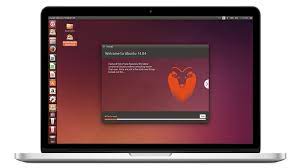Exploring the Diversity: Unveiling the World of Different Linux Versions
Different Linux Versions: Exploring the Diverse World of Linux
Linux, an open-source operating system, has gained immense popularity over the years due to its versatility, security, and customizability. One of the remarkable aspects of Linux is the wide range of distributions or versions available, each tailored to meet specific user needs and preferences. In this article, we will delve into some of the most popular Linux versions and explore their unique features.
Ubuntu
Ubuntu is one of the most widely recognized Linux distributions, known for its user-friendly interface and extensive software library. It focuses on simplicity and ease of use, making it an excellent choice for beginners. With regular updates and long-term support (LTS) releases available, Ubuntu ensures stability and security for its users.
Fedora
Fedora is a community-driven distribution backed by Red Hat Inc., renowned for its cutting-edge features and commitment to open-source principles. It emphasizes innovation by providing early access to new software technologies. Fedora’s robust security measures and strong community support make it a popular choice among developers and enthusiasts.
Debian
Debian is known for its stability, reliability, and strict adherence to free software principles. It boasts a vast package repository that offers thousands of applications for various purposes. Debian’s focus on stability makes it a preferred choice for servers and enterprise environments where reliability is paramount.
Arch Linux
If you prefer a do-it-yourself approach with full control over your system configuration, Arch Linux might be the perfect fit for you. Arch follows a rolling release model, providing continuous updates with the latest software versions available. Its minimalist design allows users to build their customized environment from scratch.
CentOS
Catering to the needs of businesses and organizations, CentOS (Community Enterprise Operating System) is a distribution based on Red Hat Enterprise Linux (RHEL). It offers long-term support, stability, and compatibility with RHEL. CentOS is widely used in server environments, providing a reliable platform for critical applications.
Linux Mint
Linux Mint provides a user-friendly experience with an interface similar to that of Windows, making it an ideal choice for users transitioning from other operating systems. It focuses on simplicity and includes various multimedia codecs and proprietary software support out of the box.
openSUSE
openSUSE is a community-driven distribution that emphasizes user-friendliness and stability. It offers two main editions: Leap, which follows a regular release cycle with incremental updates, and Tumbleweed, which follows a rolling release model with the latest software versions available. openSUSE provides powerful system management tools and extensive documentation for users of all levels.
Conclusion
The world of Linux distributions is diverse and vibrant, catering to a wide range of user needs and preferences. Whether you are a beginner looking for simplicity or an advanced user seeking customization and control, there is a Linux version that suits your requirements.
This article has provided just a glimpse into some popular Linux distributions, but there are many more worth exploring. Each distribution has its own unique features and strengths, so take the time to research and experiment to find the one that aligns best with your goals.
Remember, the beauty of Linux lies in its open-source nature – it’s constantly evolving as developers worldwide contribute their expertise to make it better every day.
Exploring Linux Landscapes: 9 Key Tips for Selecting the Right Distribution
- Ubuntu is user-friendly and suitable for beginners, offering a straightforward installation process and a familiar graphical user interface.
- CentOS is ideal for servers due to its stability and long-term support, making it a preferred choice for enterprise environments.
- Debian boasts extensive software repositories, ensuring users have access to numerous applications; however, it may use slightly older packages in favour of stability.
- Fedora serves as a testing ground for Red Hat technologies, providing cutting-edge features but with potentially less stability than CentOS or RHEL (Red Hat Enterprise Linux).
- Arch Linux appeals to experienced users who prefer a rolling release model and want fine-grained control over their system through manual configuration.
- For those interested in digital forensics or penetration testing, Kali Linux comes pre-packaged with an extensive set of security tools and utilities.
- If you’re looking for a lightweight distribution that can breathe new life into older hardware, consider Lubuntu or Xubuntu which feature more resource-efficient desktop environments than standard Ubuntu.
- SUSE Linux Enterprise is designed for mixed IT environments and often used in business settings where support services and regulatory compliance are crucial factors.
- When choosing a Linux distribution, consider the community support available. Larger communities can offer more readily available help through forums or documentation online.
Ubuntu is user-friendly and suitable for beginners, offering a straightforward installation process and a familiar graphical user interface.
Ubuntu is a Linux distribution that stands out for its user-friendly nature, making it an excellent choice for beginners. One of its key strengths lies in its straightforward installation process, which simplifies the setup for new users. Additionally, Ubuntu provides a familiar graphical user interface (GUI) that resembles other popular operating systems, allowing users to easily navigate and interact with their system. With Ubuntu’s emphasis on simplicity and ease of use, newcomers to Linux can quickly adapt and feel comfortable using this version.
CentOS is ideal for servers due to its stability and long-term support, making it a preferred choice for enterprise environments.
CentOS, with its emphasis on stability and long-term support, is highly regarded as an ideal Linux version for server environments. Its reliability and compatibility with Red Hat Enterprise Linux (RHEL) make it a preferred choice for enterprises seeking a robust and secure platform. With CentOS, businesses can confidently deploy critical applications knowing they have a stable and well-supported operating system that meets their server needs effectively.
Debian boasts extensive software repositories, ensuring users have access to numerous applications; however, it may use slightly older packages in favour of stability.
Debian, known for its stability and commitment to free software principles, offers users a vast selection of applications through its extensive software repositories. These repositories provide access to a wide range of software, allowing users to find solutions for their specific needs. However, Debian’s focus on stability means that it may prioritize slightly older packages over the latest versions. This trade-off ensures a reliable and robust operating system, making Debian an excellent choice for those who value stability and reliability in their Linux distribution.
Fedora serves as a testing ground for Red Hat technologies, providing cutting-edge features but with potentially less stability than CentOS or RHEL (Red Hat Enterprise Linux).
Fedora, known for its cutting-edge features, plays a crucial role as a testing ground for Red Hat technologies. It serves as a platform where new and innovative software technologies are introduced and refined before being incorporated into the more stable releases of CentOS or RHEL (Red Hat Enterprise Linux). While Fedora offers exciting advancements, it is important to note that its focus on pushing boundaries may result in potentially less stability compared to CentOS or RHEL. Therefore, users who prioritize stability over the latest features may find CentOS or RHEL more suitable for their needs.
Arch Linux appeals to experienced users who prefer a rolling release model and want fine-grained control over their system through manual configuration.
Arch Linux is a Linux distribution that specifically caters to experienced users who crave complete control over their system. With its rolling release model, Arch Linux ensures users have access to the latest software versions as soon as they become available. This distribution’s appeal lies in its emphasis on manual configuration, allowing users to fine-tune their system to their exact specifications. If you are an advanced user seeking a highly customizable and up-to-date Linux experience, Arch Linux is the perfect choice for you.
For those interested in digital forensics or penetration testing, Kali Linux comes pre-packaged with an extensive set of security tools and utilities.
For individuals interested in digital forensics or penetration testing, Kali Linux is the go-to distribution. It comes pre-packaged with a comprehensive collection of security tools and utilities specifically designed for these purposes. With Kali Linux, users have immediate access to a wide range of powerful tools that can aid in investigating and securing computer systems. Its focus on security makes it an invaluable asset for professionals in the field, providing them with the necessary resources to conduct thorough assessments and investigations.
If you’re looking for a lightweight distribution that can breathe new life into older hardware, consider Lubuntu or Xubuntu which feature more resource-efficient desktop environments than standard Ubuntu.
If you’re seeking to revive older hardware and give it a new lease of life, it’s worth considering lightweight Linux distributions such as Lubuntu or Xubuntu. These versions offer desktop environments that are specifically designed to be more resource-efficient compared to the standard Ubuntu. By opting for Lubuntu or Xubuntu, you can enjoy a smooth and responsive user experience on older machines without compromising on functionality or performance. These distributions are excellent choices for those looking to maximize the potential of their aging hardware.
SUSE Linux Enterprise is designed for mixed IT environments and often used in business settings where support services and regulatory compliance are crucial factors.
SUSE Linux Enterprise, a robust and reliable Linux distribution, is specifically tailored to meet the demands of mixed IT environments, making it an excellent choice for businesses. With its focus on support services and regulatory compliance, SUSE Linux Enterprise ensures that organizations can confidently deploy and manage their systems while adhering to industry regulations. Its strong emphasis on stability and security makes it a preferred option for businesses seeking a Linux distribution that provides comprehensive support and meets critical compliance requirements.
When choosing a Linux distribution, consider the community support available. Larger communities can offer more readily available help through forums or documentation online.
When selecting a Linux distribution, it is crucial to take into account the level of community support provided. Opting for a distribution with a larger and active community can greatly benefit users, as it ensures readily available assistance through forums, online documentation, and user-contributed resources. With a robust community behind a Linux version, users can find solutions to issues more efficiently and tap into the collective knowledge and experience of fellow enthusiasts. Therefore, considering the extent of community support is an essential factor in choosing the right Linux distribution for your needs.





